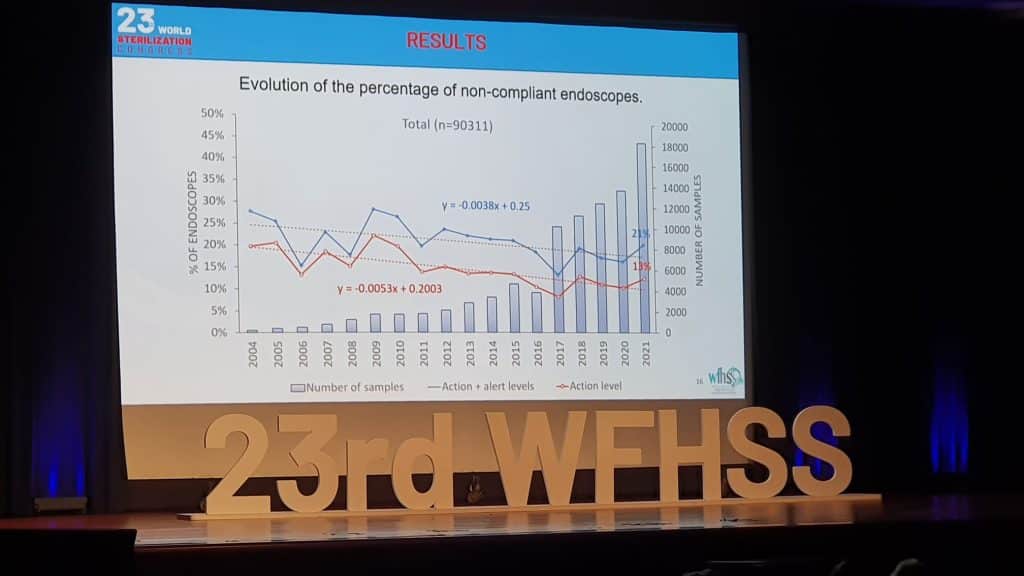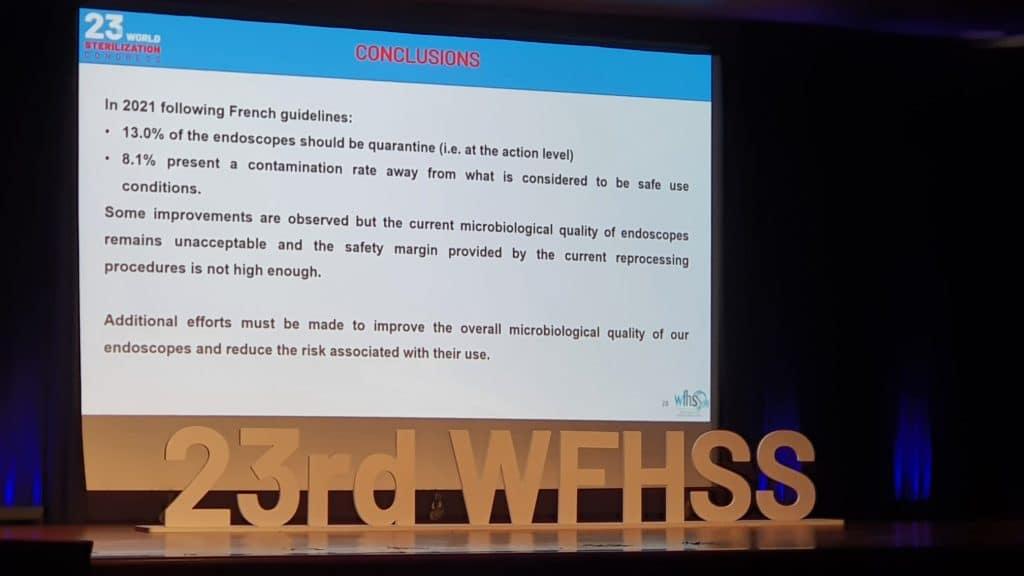Last week (16-18 November 2022) the World Sterilization Congress was held in Barcelona. Of course, Aurora was present. Lionel Pineau (Eurofins Hygiène Hospitalière, Aix-en-Provence, France) gave the latest figures on endoscope contamination. He shared his latest findings on 90,311 samples taken on endoscopes reprocessing in France.
28% of high risk endoscopes should not be used
The results are staggering, as his graph below shows :

On average, 13% of endoscopes require an action, i.e. they must be set apart and not used on a patient. Endoscope contamination level is too high for the sanitary safety of patients.
This average breaks down to :
– 14% of colonoscopes
– 10% of gastroscopes
– 8% of duodenoscopes
– 11% of ultrasound endoscopes
– 5% of bronchoscopes
And the contamination level of high risk endoscopes is much higher : 28% of those devices should be in quarantine.
In one case of colonoscopes, the contamination level goes up to 100%.
To fully appreciate the significance of these numbers, one must remember that the highest sanitary safety is sterilization : a probability of 0,000001% (1 out of a million) of finding a contaminated device.
High level disinfection damages the endoscopes
Except for a few short endoscopes, there has been no sterilization technique available until today.
Therefore, health authorities allow high level disinfection to reprocess endoscopes. High level disinfection consists in a thorough washing by hand and then by an automatic washing machine, followed by drying. Peracetic acid is the disinfectant added in the water during endoscope reprocessing.
Equally peracetic acid damages the materials present in endoscopes. Their lifespan is therefore shortened.
Endoscopy contaminations : « unacceptable »
Lionel Pineau states that « the current microbiological quality of endoscopes remains unacceptable ».

To the 13% of endoscopes that should be set aside, one must add 8,1% which use is not safe.
21,1% of endoscopes must therefore be considered as not safe, compared to the 0,000001% that would be unsafe is sterilization was applied.
Plasma sterilization against endoscopes contamination
In that same congress in Barcelone, plasma sterilization has been hailed as the most promising technique to fight endoscope contamination.
Cold plasma, such as the one developed by Aurora, is a much expected solution to better the sanitary safety in endoscopy.

